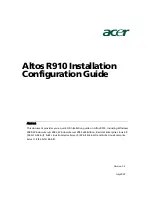
53
Chapter 4: Motherboard Connections
TPM Header/Port 80 Connector (TPM Port)
The JTPM1 header is used to connect a Trusted Platform Module (TPM), which is available from
a third-party vendor. A TPM is a security device that supports encryption and authentication in
hard drives. It enables the motherboard to deny access if the TPM associated with the hard
drive is not installed in the system.
Please go to the following link for more information on TPM:
.
Trusted Platform Module Header
Pin Definitions
Pin#
Definition
Pin#
Definition
1
LCLK
2
GND
3
LFRAME#
4
Key
5
LRESET#
6
N/C
7
LAD3
8
LAD2
9
3.3V
10
LAD1
11
LAD0
12
GND
13
SMB_CLK (optional)
14
SMB_DAT (optional)
15
P3V3_STBY
16
SERIRQ
17
GND
18
LP_CLKRUN (optional)
19
LPC_PD (optional)
20
LPC_DRQ (optional)
PCIe M.2 Connector (M.2-C1, M.2-C2)
The PCIe M.2 connectors are for devices such as memory cards, wireless adapters, etc.
These devices must conform to the PCIe M.2 specifications (formerly known as NGFF).
These particular PCIe M.2 supports M-Key (PCIe x2) storage cards. M.2-C1 and M.2-C2 can
support a speed of PCIe x 2 per port.
NVMe Ports ( NVMe0~7, 10, 11, 14, 15)
The H12SSW-NTR has twelve NVMe ports (2 ports per 1 Slim SAS connector) on the
motherboard. These ports provide high-speed, low-latency PCIe 4.0 x4 connections directly
from the CPU to NVMe Solid State (SSD) drives. This greatly increases SSD data-throughput
performance and significantly reduces PCIe latency by simplifying driver/software requirements
resulting from direct PCIe interface from the CPU to the NVMe SSD drives.
SATA/NVMe Hybrid Ports (SATA0-7/NVMe 8-9; SATA8-15/NVMe12-13)
Each SATA/NVMe hybrid port can support up to eight SATA 3.0 ports or 2x NVMe ports (PCIe
4.0 x4), for a total of sixteen SATA ports or four NVMe ports.
















































